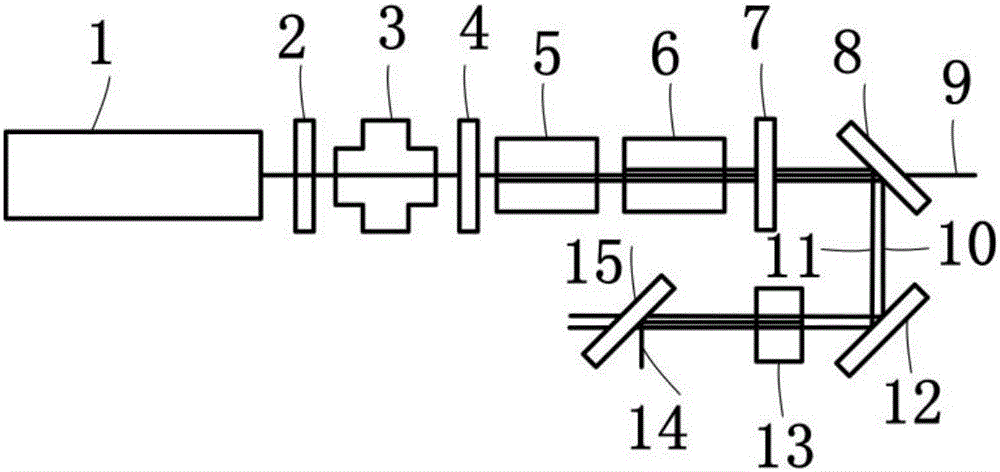A 589nm laser based on co-cavity double-Raman medium and laser sum frequency
A 589nm, Raman laser technology, applied in the direction of lasers, laser components, phonon exciters, etc., can solve the problems of high cost, complex structure of output sodium yellow light, etc., and achieve high output power and output energy, and anti-damage threshold High, easy to integrate effect
- Summary
- Abstract
- Description
- Claims
- Application Information
AI Technical Summary
Problems solved by technology
Method used
Image
Examples
Embodiment Construction
[0021] The present invention will be further described in detail below in conjunction with the accompanying drawings.
[0022] see figure 1 , figure 1 It is a schematic diagram of the structure of the 589nm laser based on the common cavity dual Raman medium and the laser sum frequency of the present invention. As shown in the figure, the 589nm laser based on the common cavity dual Raman medium and the laser sum frequency of the present invention includes a 1064nm laser pump source 1 , one-half slide 2, Faraday isolator 3, Raman laser cavity mirror 4, Raman laser output mirror (7), KGW crystal 5, (BN) crystal 6, first filter mirror 8, reflector 12, KDP crystal 13 and second filter lens 15 . The laser light emitted by the 1064nm laser source 1 passes through the half glass slide 2 and the Faraday isolator 3, and enters the Raman laser cavity through the front cavity mirror 4 of the Raman laser After the 1064nm laser is Raman frequency-shifted by the KGW crystal 5, a laser 10 ...
PUM
| Property | Measurement | Unit |
|---|---|---|
| Length | aaaaa | aaaaa |
Abstract
Description
Claims
Application Information
 Login to View More
Login to View More - R&D
- Intellectual Property
- Life Sciences
- Materials
- Tech Scout
- Unparalleled Data Quality
- Higher Quality Content
- 60% Fewer Hallucinations
Browse by: Latest US Patents, China's latest patents, Technical Efficacy Thesaurus, Application Domain, Technology Topic, Popular Technical Reports.
© 2025 PatSnap. All rights reserved.Legal|Privacy policy|Modern Slavery Act Transparency Statement|Sitemap|About US| Contact US: help@patsnap.com


